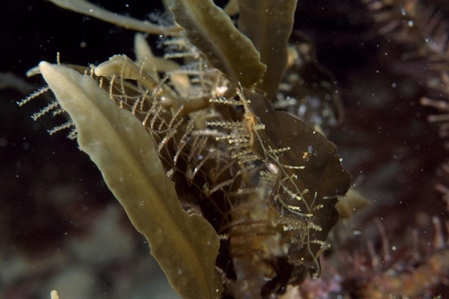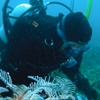General Description
Colony of individual polyps (hydranths) joined by root-like network of tubular stolons at the base. Colony shape is simple stems. Colour: buff to yellow, gonophores cream to yellow. Up to 1 cm high.
Biology
This species is a very common epiphyte, often growing on red and brown algae. Colonies grow from spring through summer.
Habitat
On red or brown seaweeds.
Reefs
Distribution guide
Southern Australia.
Species Group
Depth
Water Column
Max Size
1 cm
Diet
Plankton or Particles
Harmful
Generally not harmful but still able to sting bare skin.
Commercial Species
No
Species Code
MoV 3473
Identify
Conservation Status
- DSE Advisory List : Not listed
- EPBC Act 1999 : Not listed
- IUCN Red List : Not listed







